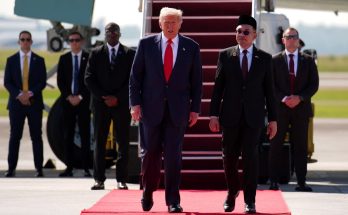No need for gloom and doom. The Indian economy may be down, but it’s clearly not out. A message of cautious optimism and can-do spirit radiated from India’s Finance Minister P. Chidambaram as he unveiled the country’s 82nd budget in the Lok Sabha (upper house of parliament) Feb 28.
In a realistic tone, the Harvard-educated finance minister sought the support of all stakeholders for uplifting the Indian economy, which continues to be a beacon in times of the global slowdown, from the present state of churn and crisis. Restoring high growth rates of over 8-9 per cent seen some years ago was the main challenge, he stressed, but indicated that it was not impossible. The message was one of guarded optimism: “Whatever may be the final outcome, growth is below potential. But there is no need for gloom.”
In a no-nonsense manner, Chidambaram identified three constraining factors for the Indian economy: high fiscal deficit, slow growth and high inflation. “My greater worry is current account deficit,” he said, adding that India will need $75 billion to finance the current account deficit. The only way this is possible is by scaling up foreign direct investment, he indicated. “India does not have the choice in either welcoming or spurring foreign investment,” he said.
With an eye on international investors who continue to harbour apprehensions about the fate of the promised economic reforms, the finance minister assured that projects will be cleared fast without quibbling much over audit remarks.
In a clear-cut resolve to upscale the country’s infrastructure, the finance minister pledged to invest $1 trillion in this key area during the 12th Plan period (2012-13 to 2116-17). The new initiatives for infrastructure upgrade include setting up of a regulatory authority for the road sector, a scheme to spruce up the financial health of state-run power utilities and issuance of tax-free bonds.
With the elections barely 14 months away, one would have expected a heavy dose of populism, but the Budget 2013 sought to delicately balance politics and economics. The finance minister announced scaling up outlays for diverse areas, including women development, health, Scheduled Caste welfare, farm credit, malnutrition, rural job scheme, water and urban development.
Similarly, outlays were increased for human resource development, midday meal scheme, food security and integrated child development.
The government is hoping to generate higher revenues to fund the upsurge in spending by imposing new taxes on the rich and large companies.
“Fiscal consolidation cannot be effective only by cutting expenditure,” Chidambaram said.
Total budget expenditure will rise by an unexpectedly high 16 percent in the fiscal year that begins on April 1 to 16.65 trillion rupees, even as the fiscal deficit for the current year will fall to 5.2 percent of gross domestic product, besting a revised target of 5.3%. Next year, the deficit will be 4.8% of GDP, he said.




